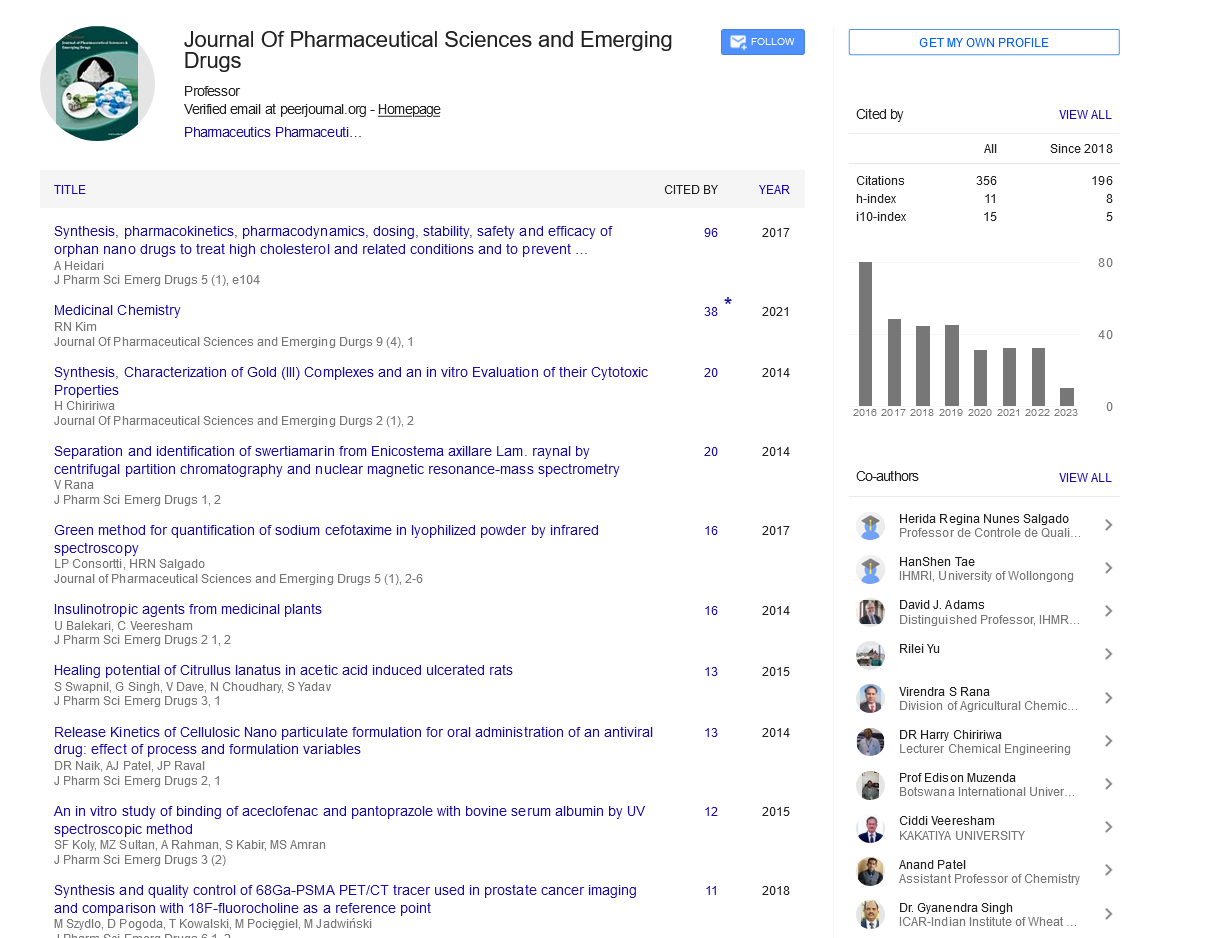Opinion Article, J Pharm Sci Emerg Drugs Vol: 12 Issue: 4
Drug Metabolism and Enzyme Inhibition in Pharmacology
Garza Patrick*
1Department of Pharmacy, University of South Florida, Florida, United States of America
*Corresponding Author: Garza Patrick,
Department of Pharmacy, University of South Florida, Florida, United States of
America
E-mail: gar_patrick67@gmail.com
Received date: 21 July, 2024, Manuscript No. JPSED-24-148306;
Editor assigned date: 23 July, 2024, PreQC No. JPSED -24-148306 (PQ);
Reviewed date: 06 August, 2024, QC No. JPSED -24-148306;
Revised date: 13 August, 2024, Manuscript No. JPSED-24-148306 (R);
Published date: 20 August, 2024, DOI: 10.4172/2380-9477.1000196.
Citation: Patrick G (2024) Drug Metabolism and Enzyme Inhibition in Pharmacology. J Pharm Sci Emerg Drugs 12:4.
Description
Drug metabolism and enzyme inhibition are key components of pharmacology, playing major roles in how medications are processed by the body and how they exert their effects. Understanding these mechanisms is essential for optimizing drug design, improving therapeutic efficacy, and minimizing adverse effects. Drug metabolism, primarily occurring in the liver, involves biochemical reactions that modify drugs into forms that can be more easily excreted. Enzyme inhibition, on the other hand, influences the activity of these metabolic pathways and can significantly alter drug efficacy and toxicity. Drug metabolism is the body’s way of chemically altering drugs to facilitate their excretion.
This process is typically divided into two phases: Phase I and Phase II metabolism. Phase I metabolism involves chemical reactions such as oxidation, reduction and hydrolysis. These reactions, primarily carried out by a family of enzymes known as cytochrome P450 (CYP450), serve to either activate a drug (prodrugs) or prepare it for further modification. In Phase II metabolism, the drug or its Phase I metabolites are conjugated with substances like glucuronic acid, sulphate, or glycine, making the drug more water-soluble and easier to eliminate through urine or bile.The liver is the principal site of drug metabolism due to its high concentration of metabolic enzymes, although other organs such as the kidneys, lungs and intestines also contribute.
Enzymes are biological catalysts that accelerate chemical reactions, including those involved in drug metabolism. Among these, the CYP450 family of enzymes is the most important in Phase I metabolism. There are numerous CYP450 isoforms, each responsible for metabolizing different drugs. For instance, CYP3A4 is involved in the metabolism of around 50% of all clinically used drugs, while CYP2D6 metabolizes many antidepressants and antipsychotics. This inhibition can be competitive, non-competitive, or uncompetitive. In competitive inhibition, the inhibitor competes with the drug for binding to the enzyme's active site. Non-competitive inhibition occurs when the inhibitor binds to a different part of the enzyme, altering its structure and reducing its activity.
In uncompetitive inhibition, the inhibitor binds only to the enzymesubstrate complex, further preventing the reaction. Enzyme inhibition has significant implications for drug therapy, particularly when it leads to drug-drug interactions. For example, if one drug inhibits the enzyme responsible for metabolizing a second drug, the second drug can accumulate in the body to toxic levels. A well-known example is the interaction between grapefruit juice and drugs metabolized by CYP3A4. Juice contains compounds that inhibit CYP3A4, leading to increased blood levels of certain medications, such as statins or calcium channel blockers, potentially causing adverse effects. Another clinically relevant example of enzyme inhibition is seen with ritonavir, an HIV protease inhibitor that also inhibits CYP3A4.
Ritonavir is used in combination with other protease inhibitors to boost their concentrations in the blood, allowing for lower dosing and improved efficacy. This intentional inhibition is a strategy known as “pharmacokinetic enhancement” and has proven valuable in managing HIV/AIDS. Drug metabolism and enzyme inhibition are fundamental processes in pharmacology that affect how drugs are processed in the body and how effective they are in treating diseases. The CYP450 enzyme family plays a pivotal role in drug metabolism, and any inhibition of these enzymes can lead to significant drug-drug interactions. Understanding the dynamics of enzyme inhibition is important for designing safe and effective drug therapies, as well as for managing potential adverse effects and optimizing treatment outcomes. As pharmacology continues to evolve, these concepts will remain central to drug development and personalized medicine.
 Spanish
Spanish  Chinese
Chinese  Russian
Russian  German
German  French
French  Japanese
Japanese  Portuguese
Portuguese  Hindi
Hindi 